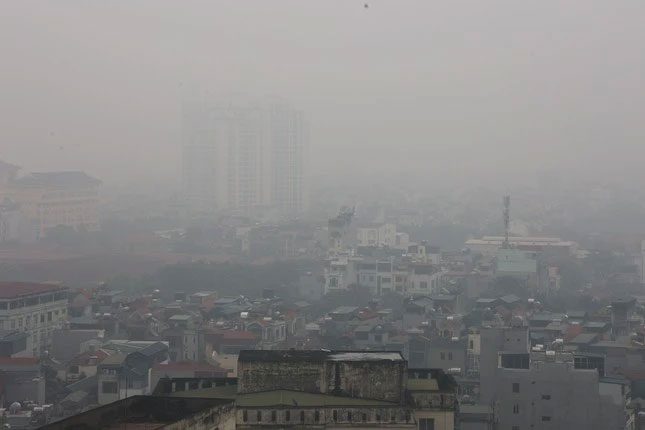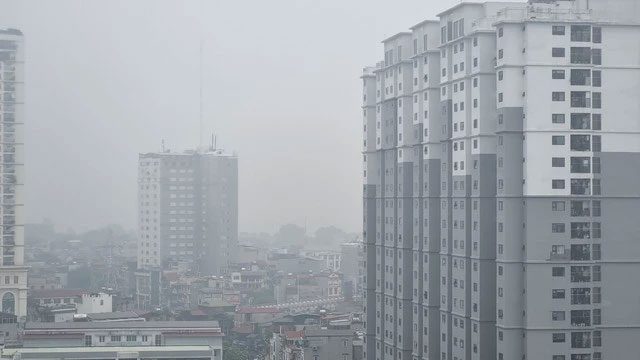According to regulations, air pollution in Hanoi and northern provinces primarily occurs during the winter months when weather conditions are unfavorable. However, today, Hanoi recorded severe air pollution levels, which is considered unusual and rarely seen.
This morning (August 11), many Hanoi residents were surprised while commuting as the sky was thick with haze, creating an atmosphere reminiscent of fog and limiting visibility.
Reports from various monitoring systems indicate that this morning, Hanoi experienced serious air pollution, with several measurement points recording red levels (harmful to everyone’s health), and notably, some points reached purple levels (very harmful to everyone’s health).
The PAM Air monitoring system noted many measurement points reached red levels this morning, particularly some points like those at the Vietnam National University (Cau Giay District) and Trung Hoa-Nhan Chinh area (Thanh Xuan District) reached purple levels.
The air quality monitoring application from the Ministry of Natural Resources and Environment also reported points at orange levels (starting to affect the health of everyone, especially the elderly, children, and those with respiratory or cardiovascular diseases).

Hanoi’s sky shrouded in haze this morning (August 11).
According to Dr. Hoang Duong Tung – President of the Vietnam Clean Air Network, air pollution in northern provinces, including the capital Hanoi, is significantly influenced by weather factors.
Typically, severe air pollution days occur mainly in winter, during weather inversions that prevent pollutants from dispersing and causing severe contamination near the ground.
During rainy seasons, Dr. Tung notes that very serious pollution cases are rarely recorded, especially after Hanoi has just experienced rainfall today. Therefore, the air pollution this morning is quite abnormal.
According to the National Center for Hydro-Meteorological Forecasting, today’s forecast for Hanoi includes cloudy skies, scattered showers, and thunderstorms, with localized heavy rain expected. The rain and thunderstorms are anticipated to improve Hanoi’s air quality.
Air pollution has been a serious environmental issue in Hanoi for many years. Notably, peak pollution typically occurs from October to March each year.
Air pollution in Hanoi is attributed to various causes such as traffic, industrial activities, construction, and daily activities.
According to the National Environmental Report 2016-2020, air pollution in Vietnam is primarily dust-related, with fine particulate matter PM2.5 being considered a silent killer in the air.

The area of high-rise buildings in Hanoi shrouded in haze. (Photo: Science and Life).
International studies have shown that PM2.5 can easily penetrate the human body through the respiratory system, infiltrating deep into the lungs and entering the bloodstream, causing several dangerous diseases.
Individuals who are frequently exposed to fine dust may experience health issues such as sneezing, runny nose, shortness of breath, and dry eyes… Long-term exposure can lead to increased rates of reduced lung function, chronic bronchitis, and heightened risks of stroke, cardiovascular diseases, and cancer.
The Ministry of Health advises that on polluted days, residents should limit outdoor activities, exercise, and labor when air quality is at poor levels. When going outside, individuals should use quality masks and wear them correctly. It is also recommended to rinse the nose and gargle with saline morning and night, especially after being outdoors. Eye rinsing with saline before bed is also encouraged.


















































